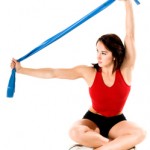When, Why & How To Stretch
Author: Kai Fusser, MS
 Everybody knows (even non-athletes) that stretching can be beneficial for physical performance.
Everybody knows (even non-athletes) that stretching can be beneficial for physical performance.
But there is a lot of misinformation and confusion on why, when, what and how to stretch. Also, many confuse stretching with a warm up and vice versa.
A warm up is exactly what it says, warming up your body, the muscles, through dynamic movements. It is the increased blood flow that warms up your muscle. Stretching on the other hand is either static or performed very slowly, which is just the opposite of a warm up.
When Should You Stretch?
One issue is that the muscles don’t like to be stretched when they are cold. They will hardly be able to be “stretched” or lengthened as they are not supple and don’t like to “let go”. Therefore, the stretch is being transferred to the ligaments and tendons, and that’s not what we want.
So I recommend only stretching if your muscles are really warmed up, ideally after a workout or some physical activity. By the way, there is no evidence that stretching will prevent injury before physical activity, yet plenty of evidence that a warm up will.
Why Should You Stretch?
So why should we stretch? It’s to prevent your muscles from tightening after hard physical activity and giving the muscles the signal to let go which is controlled by your nervous system.
I do not recommend to use stretching alone to improve flexibility or range of motion. Stretching alone will not strengthen the muscles as there is no stabilizing of the joints required. This is better achieved through full range of motion exercises that involve a load on the muscles by using weight or resistance.
The Fundamentals Of Stretching
There are many different ways to stretch – from completely static (holding) to PNF (short term tension then letting go). I suggest you try different ways and see what feels best.
I prefer stretching against a rubber band, i.e. attached to a solid object and leaning against it or pulling the extended leg towards the chest with a rubber band. Rubber bands will “dampen” the pull on the muscles and can help with a more progressive and controlled stretch.
So stretch! Just know when and why.
These statements have not been evaluated by the Food and Drug Administration. This information is not intended to diagnose, treat, cure or prevent any disease.
